Tags
avocado, beetroot, cabbage, carrot, farmers’ market, feta, kohlrabi, olive oil, orange, pear, pork, potato, seed, sorrel
It will be no real surprise to any of you who have been reading for a while, to know that as well as loving cooking, I also love reading about, planning, and shopping for cooking. And any of you who follow me on Instagram, will also know that I love our local farmers’ markets, and regularly post photos like the one above showing my farmers’ market haul from last week.
Some of you may have thought that all this look lovely, but how does it work for the weekly routine of getting meals on the table? How does this produce become weeknight meals, and without (importantly) ending up with wastage as you get rid of wilted leftovers at the end of the week?
While I have touched on some of these answers when discussing how I deal with seasonal gluts for example, I thought it might perhaps be useful for me to explicitly outline the process I use to plan my meals, buy much of my fresh produce at markets, and minimise waste, while putting meals on the table each night.
And before this starts sounding a bit like ‘the answer to the ultimate question of life, the universe and everything’…as always this is an outline of how it works in theory, or how everything might fall into place in one particular week – I still regularly have my Sunday evening dashes to a major supermarket!
There are two main approaches to weekly meal planning – plan the meals, make a list, then go and buy the ingredients; or go and see what looks good/in season/cheap and then decide what to make afterwards. I am by preference in the first group – as I said, I love the planning nearly as much as the cooking!, but since going regularly to the markets, I’ve had to combine approaches to some extent.
I’m going to use as an example last week’s shop (pictured at the top) at the Farmers and Foodies Market – held on Friday afternoons at the Old Bus Depot Markets site in Kingston. I usually buy the Burrabee Farm harvest bag, which is an assortment of seasonal vegetables, plus some eggs or honey, all grown on their farm at Burra, east of Canberra.
Last week the bag included potatoes, pumpkin, kohlrabi, spring onions, carrots, red cabbage, sorrel, Swiss chard, parsley and eggs, and I also bought some apples and pears from The Apple Shed, olive oil from Shingle Hill Estate, pork spare ribs from the Bush Goddess, and Tilba Real Dairy cream. I also look at what I have to use up in the fridge and pantry, this week that included some sweet potato and pasta that was on sale the week before, and a quarter of a green cabbage.
My number one tool to work out what I’m going to do with all this bounty is the website Eat Your Books – you can see my bookshelf there through the link in the sidebar. If, like me, you have a lot of cookbooks, followed food blogs, online recipes etc, you add them to your bookshelf on Eat Your Books, and you can then search every recipe by ingredient, occasion, cuisine etc.
Below is an image of my search for ‘red cabbage’, which resulted in the recipe for date, feta and red cabbage salad we ate on Tuesday. I do a similar search for each of the main vegetables I have, narrowing the search to just include salads for example, if that’s what I’m after. Our meals will often be a protein plus a substantial side salad as Mr M prefers his vegetables raw, so I will then decide what protein will work best.
I also try and double up on recipes to use things like fresh herbs so there’s less waste – this week I had a big bunch of parsley so you will notice that in most of the dishes, as well as two dishes with carrots as I had a few of those. Usually I plan about five meals to allow for flexibility with leftovers, though this week I only planned four as we ate out twice – a nice change from the usual routine! Once I’ve decided what to make, I make a list of what other ingredients I need to buy, and then decide roughly what order we will eat the meals in, depending on what needs to be used first, and the kids’ afternoon/evening activities.
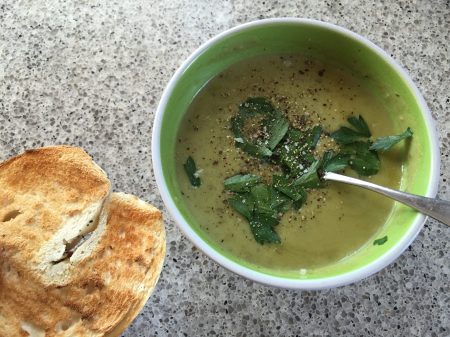
The result of all this is the menu below, including after school muffins and soup for my work lunches. I’ve linked to the recipes I used where they’re online. The rest were either basics like chicken schnitzel that don’t really need a recipe, or in the case of the lamb and chicken pasta, were from a Hello Fresh box I decided to try – I’ll talk about my experience of that in another post…

- Afternoon teas: Orange olive oil muffins
- Work lunches: Sorrel and potato soup
- Saturday: Dinner hosted by friends
- Sunday: Chicken schnitzel, sweet potato mash, and kohlrabi, cabbage & herb salad w pickled cumquats
- Monday: Pork spare ribs, koshihikari rice, and roasted carrots w avocado & toasted seeds
- Tuesday: Lamb meatballs, horseradish mash, and date, feta & red cabbage salad
- Wednesday: Chicken fettuccine w Swiss chard, and carrot, beetroot & pear salad w toasted seeds
- Thursday: Dinner out at Mork’s Contemporary Thai for Mr M’s birthday
- Friday: Leftover salads, soup and pasta
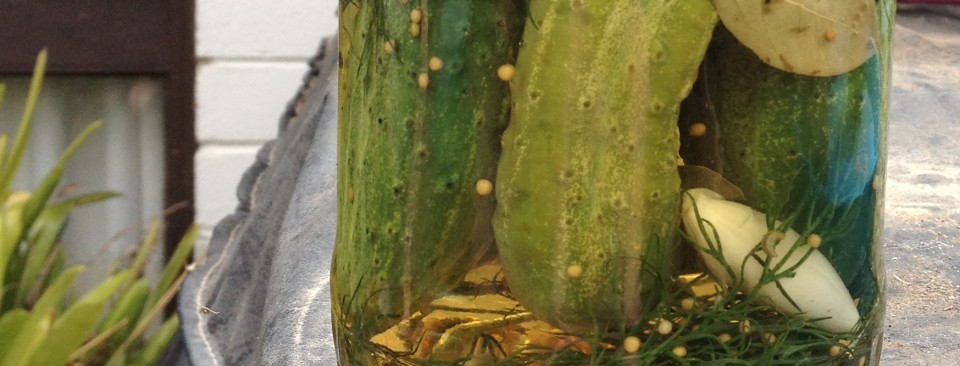
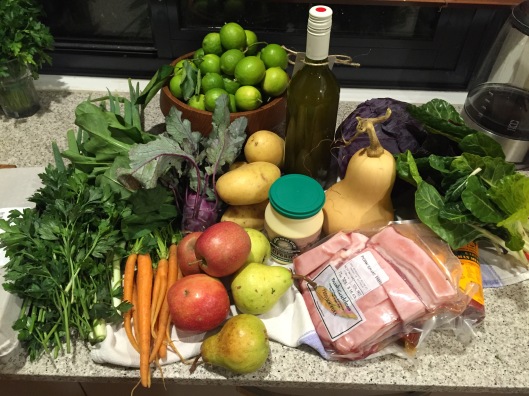

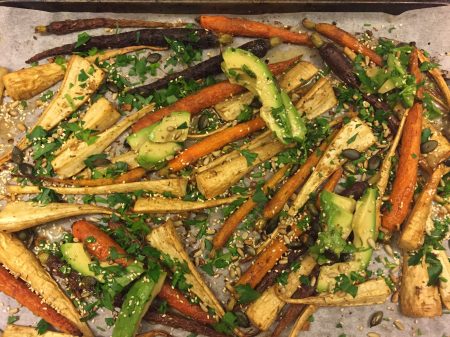
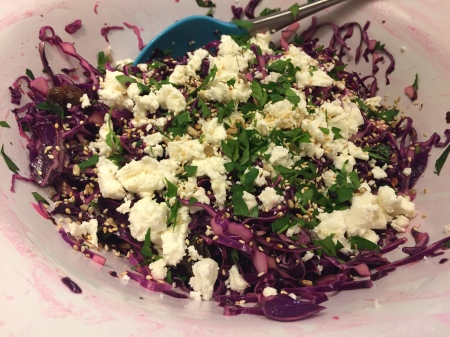

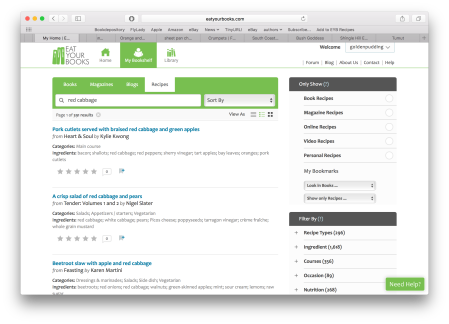
Great advice! When I gave cooking lessons, I always said, “even a chef can’t cook in an empty kitchen!” But I still have friends who don’t even have canned tomatoes in their pantries! I actually think those of us who use every last carrot and let nothing go to waste are more creative and better cooks. Plus, it’s just smart.
LikeLiked by 1 person
‘More creative and better cooks’ – I’ll go with that! Thanks Mimi 🙂
LikeLiked by 1 person
I usually begin by intentionally using up last week’s unused veg in soup, salad or stir fry. I buy ingredients for a roughed out menu I’ve made for the upcoming week, but in the end it is all very fluid and I just work with what I have and feel like cooking and eating, avoiding buying last minute extras. I have an EYB account too it’s a great resource.
LikeLiked by 1 person
Thanks Sandra – yes I love my EYB!
LikeLike
Meals at your place look wonderful Beck, And what a sensational and thought provoking post. I love all your big vegetable salads.
As we don’t eat meat here, and good fish is hard to find locally, I tend to base meals around fresh vegetables in season, ( home grown and bought) combined with pantry staples such as chick peas, dried beans, lentils and pasta, along with cheese and eggs. We buy two lots of fish, or fish and seafood, when in the city and have a good time looking for something new to make with that. I often make veg stock in the morning, using bits and pieces of vegetable, mushroom stalks, herbs and this usually goes into a risotto at some point. We are big on soups here too. I like the idea of ‘eat your books’ but am still fond of a wander around the bookshelves and the 20 years worth of old mags such as gourmet traveller, delicious, feast and so on.
Living a long way from shops, I need to have most things on hand, but I am a little random with planning.
LikeLiked by 1 person
That sounds lovely Francesca, I would love to have vegetables more central to our meals, but catering to kids’ tastes means we more often go for salads, and encourages me to be inventive with them!
LikeLiked by 1 person
What a wonderful resource this post is for busy people, Rebecca. Being retired, I am in the joyful position of shopping for bits and pieces as I need them, rather than buying in bulk ahead of time. Happy cooking x
LikeLiked by 1 person
That all looks fabulous, I’m feeling hungry reading about your dishes, and I just had dinner. Nice to see the thought process that happens with meals.
LikeLiked by 1 person
Thanks Elissa, I actually found the process of writing this quite useful in actually clarifying what I do in my own mind!
LikeLike
Pingback: Monday link love - Yummy Lummy
Thanks Gary!
LikeLike
Great to see the process you use. Time is always a key factor in our busy lives so planning is the key! cheers xxx
LikeLiked by 1 person
What a fabulous tip Beck… I’ll be checking out EYB this evening for sure! Love all of your veggie-driven sides and salads – such beautiful colours and flavours!
LikeLiked by 1 person
Thanks Margot, and glad you’re looking at EYB, it’s one of the few food tools I’m quite evangelical about 🙂
LikeLiked by 1 person